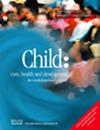Preliminary Psychometric Properties of the Autism Classification System of Functioning: Social Communication (ACSF: SC) in Urdu-Speaking Children
Abstract
Background
Autism spectrum disorder (ASD) is a neurodevelopmental disorder characterized by deficits in social communication and interaction. The Autism Classification System of Functioning: Social Communication (ACSF: SC) is a promising tool to categorize levels of functioning for social communication skills in children with ASD. However, its psychometric properties in Urdu-speaking populations remain unexplored. This study aims to investigate these properties, addressing a gap and offering insights for clinical practice in the region.
Methods
The English version of ACSF: SC was translated into Urdu, followed by cultural adaptation. The Urdu ACSF: SC was approved by the developers of the tool and will be published on their website (Canchild) after final edits. Therapists and parents assessed the reliability of their classifications. For interrater reliability, two speech and language pathologists (SLPs), two occupational therapists (OTs), two behavioural therapists (BTs) and 50 parents participated to classify the communication level of 50 autistic children aged 3–10 years. The test–retest reliability test was performed with a 14-day interval. Only 46 parents were able to complete the retest after 14 days. The measurement of the interrater and test–retest reliability was conducted via weighted kappa coefficients.
Results
The analyses of typical performance level and best capacity level revealed that the communication levels of children in ACSF: SC were consistent. The weighted kappa interrater reliability varied from fair (0.265) to good (0.687) for the best capacity level and from fair (0.271) to excellent (0.822) for the typical performance level; test–retest reliability ranged from moderate (0.437) to excellent (0.885) for the best capacity level and from moderate (0.575) to good (0.741) for the typical performance level.
Conclusion
The adapted ACSF: SC tool successfully estimates the level of communication ability of Urdu-speaking children with ASD and is culturally and linguistically appropriate for describing communication ability in this population.
Key Message
- The study confirms that the Urdu version of the ACSF: SC is a reliable tool for children with ASD and can be effectively used in clinical settings.
- Psychometric properties of Urdu version of the ACSF: SC align closely with those of the original English version, making it a suitable tool for use with Urdu-speaking populations.

 求助内容:
求助内容: 应助结果提醒方式:
应助结果提醒方式:


